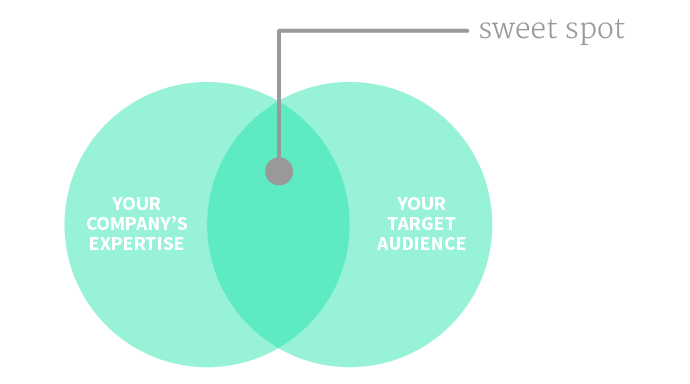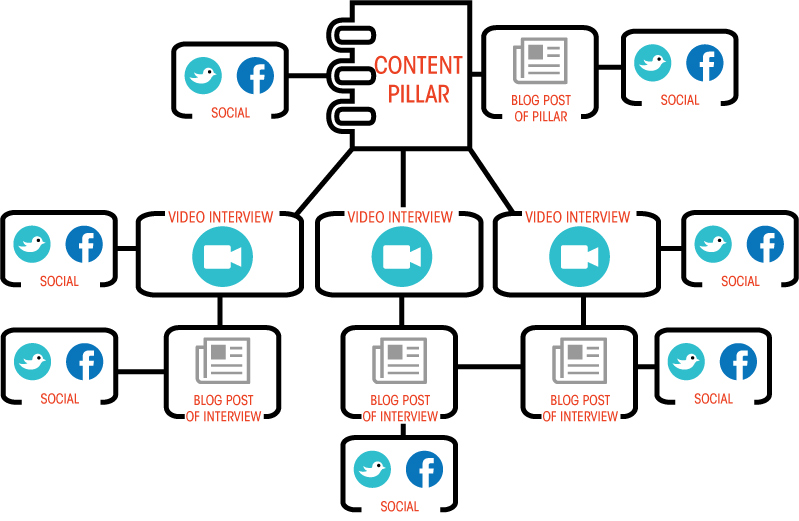How to Be a Better Blogger Through Content Planning
Here’s the thing about blogging. It’s awesome for the first two months.
After two months, whoever is managing your blog often hits a wall. They struggle to come up with fresh ideas and suddenly, even the idea of writing a blog post feels like a cactus prickle in your sock – obvious and annoying.
It’s the classic case of what I like to call “blog-o-phobia,” the tormented state of mind affiliated with a stagnant blog. Beware. Chronic blog-o-phobia may result in:
- Leaving “Write Blog Post” on your to-do list everyday for a month without ever checking it off
- A nagging feeling of hatred towards anything with “/blog.html” associated with it
- Dissociation with the blog
But there is a way to prevent blog-o-phobia. It’s called content planning. And it results in a continual stream of high-quality posts and topic ideas.
What is Content Planning?
Content planning is the concept of taking time to plan and document a content strategy using an editorial calendar. Though only 27% of B2B marketers report having a documented content strategy, those marketing departments that do document their strategy continually report higher ROI and pageviews – making content planning one of the most important steps in a content marketing operation.
The planning starts by answering questions regarding who you are writing for (audience), when and how frequently you want to publish content (production) and what business goals your content should achieve (content score).

At Kapost, we recommend planning content on a quarterly cycle. Each quarter, our content team identifies a few major themes or topics for content that we believe will generate new leads and revenue, and then produce content around those topics.
To illustrate this idea, let’s say you’re in the manufacturing business. In your research, you may discover that an eBook on Warehouse Shipping in the USA makes the most sense for your customers and will probably produce new business leads for your company.
Ok, great! You have an eBook topic. But how does an eBook help your blogging efforts?
Content Pillars Produce Blogs
The process and strategy behind content planning is similar to classic ad campaigns. There is a strategic launch of one main creative piece (TV ad) and then a rollout of several supporting collateral pieces (in-store displays, web graphics). The coordinated effort of several similar pieces of collateral communicate your message to a bigger audience and hopefully foster a bigger return on investment.
Instead of calling our major launch asset a “TV ad” or “ad campaign,” we content marketers call it a content pillar. A content pillar is a major content asset developed around a main theme, idea or topic from which supporting collateral is easily derived or repurposed.
If your content pillar is an eBook on “Warehouse Shipping in the USA,” your supporting collateral pieces are the dozens of blog posts that can be created to support that asset.
For instance, you could publish a video interview and corresponding blog post based on each of the American warehouse experts you interviewed while researching the subject of warehouse shipping.

If you’ve chosen a really juicy topic for your content pillar, the supporting collateral should stretch far. In the Blueprint of a Modern Marketing Campaign, Kapost’s Anne Murphy describes how one content pillar can become 296 smaller assets. Now, you have one content pillar, and now dozens of partially written blog posts. And – if you publish one asset per day – more content than there are work days in a year (250).
The Simple Steps
Here are the main takeaways and the things to remember when starting to plan your content:
- Identify your audience, and how frequently you hope to communicate with them
- Identify a topic/theme that will likely produce the new business goals associated with your content marketing – this is your content pillar.
- Identify dozens of blog post ideas that both support and are supported by your content pillar.
- Populate your editorial calendar with the release dates for each of these assets: eBook, dozens of blog posts
- Create / publish / promote your content assets!
About the Author
 Jean Spencer is a writer for Kapost, focusing on digital marketing, content marketing and the state of the journalism industry. Prior to Kapost, Jean owned a touchscreen glove company and was a political reporter with The Wall Street Journal. She also likes to do crossword puzzles and rock climb.
Jean Spencer is a writer for Kapost, focusing on digital marketing, content marketing and the state of the journalism industry. Prior to Kapost, Jean owned a touchscreen glove company and was a political reporter with The Wall Street Journal. She also likes to do crossword puzzles and rock climb.
Want more content tips? Sign up for the SEO Copywriting Buzz newsletter.

Great thoughts here. I think the content pillars also gives way to the content planning for social media accounts too.
Courtney,
I agree, it totally does help with planning social media. It also provides a great tool to map your calls to action. That way you can provide your readers with similar information regarding topic, but new stuff. Cool.
You’ve put together a good outline to use here! Proper planning is often overlooked by clients. At least the time and expertise it takes to come up with a solid plan.
Jean you have pointed out some useful elements for content writing. It is a must for every writer and content developer that the topics that he/she plans to put forward through the blog must have been clearly understood and worked on. Only then, with a bit of imagination and appealing formulation, the content can be created in order to gain high readership and value.